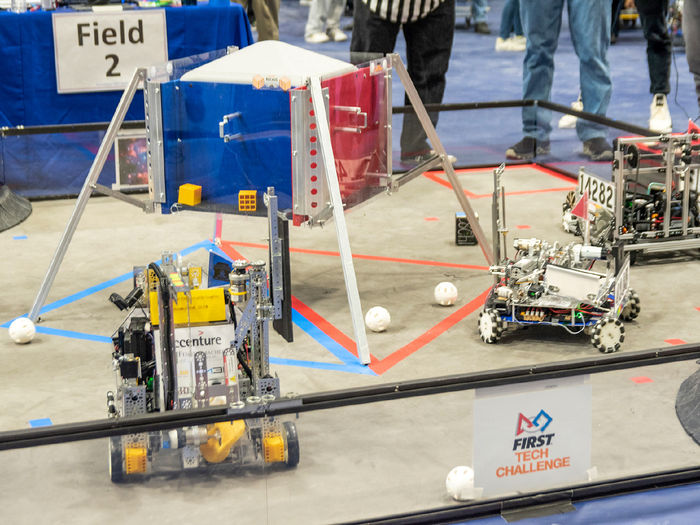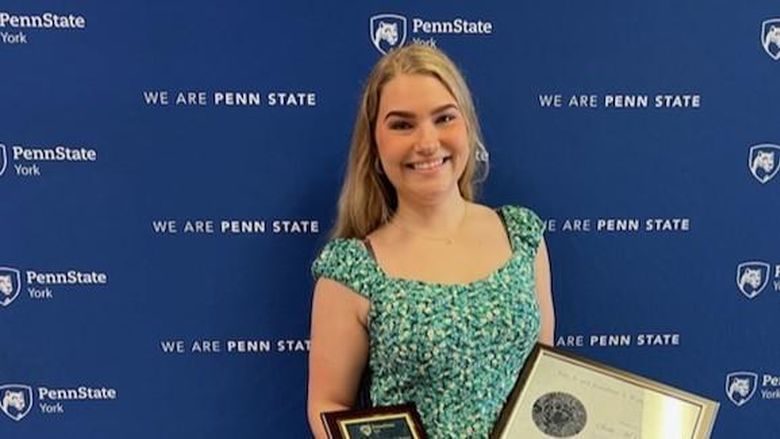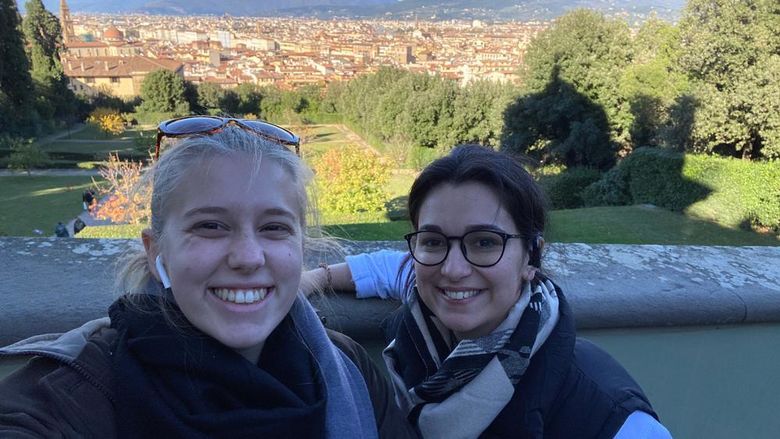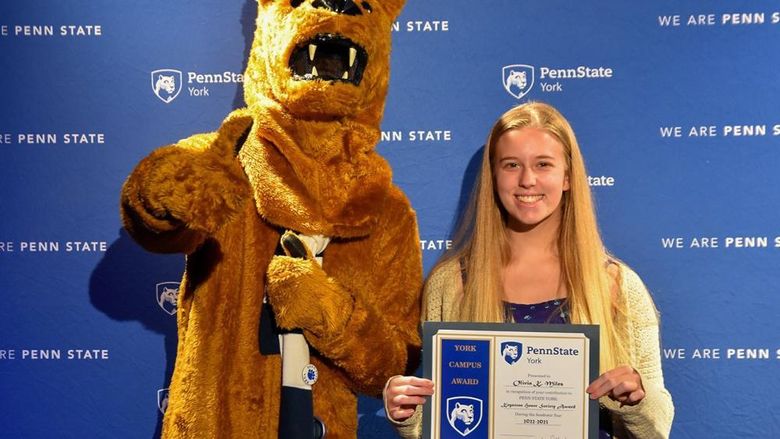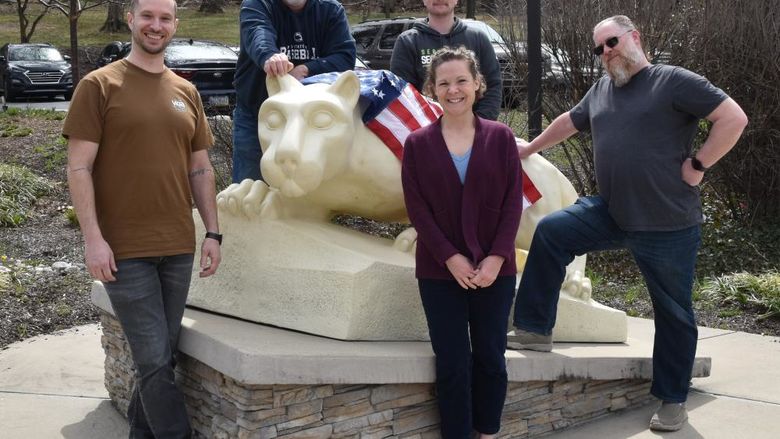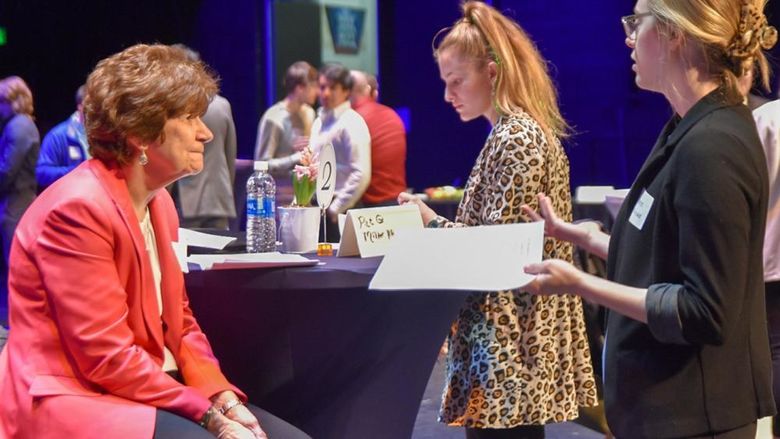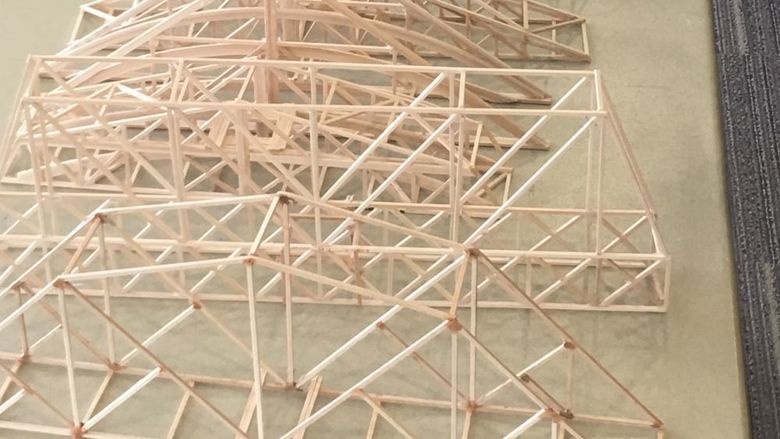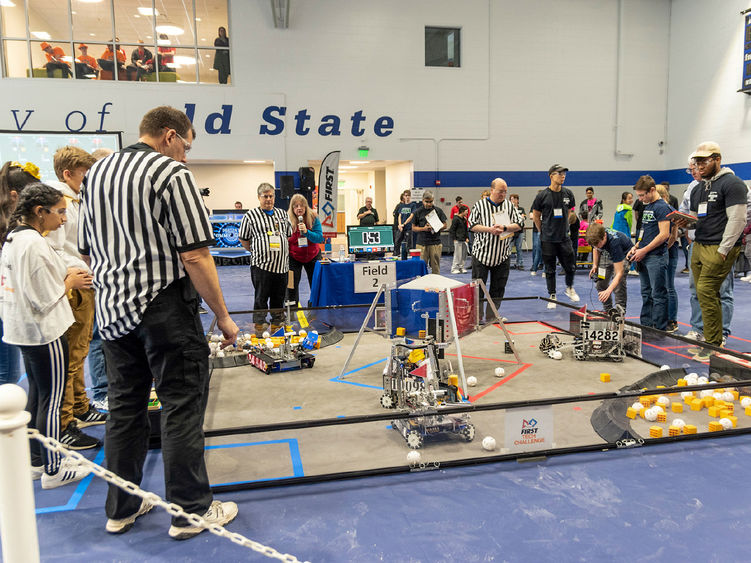
The gym in the Joe and Rosie Ruhl Student Community Center at Penn state York will be transformed into a robotics competition area when 54 teams of middle and high school students compete on Jan. 21 and 22 at Penn State York. The competition is free for those who want to attend and cheer on their favorite robot and team.
YORK, Pa. — The First Tech Challenge (FTC) is back at Penn State York after a hiatus during the COVID-19 pandemic. Robots will be ready to go for the South-Central Pennsylvania Qualifier on Saturday and the Blue and White Qualifier on Sunday.
Teams begin arriving at 7:30 a.m. each day with the opening ceremonies set for 11 a.m. in the gym of the Joe and Rosie Ruhl Student Community Center at Penn State York. Matches conclude about 5:30 p.m. Both days of competition are free and open to the public.
The Saturday competition includes 30 teams while the Sunday event features 24 teams from across Pennsylvania vying for the opportunity to compete at the state competition.
Prior to the ceremony, teams will have an opportunity to get organized, register their robots and prepare for competition. These events are made possible on campus thanks to a grant from the Pullo Family Fund.
Teams are also competing for judged awards for their robot design, programming and team outreach. Many volunteers from the local community participate in judging and helping make the event run smoothly for the more than 500 students coming to York to compete.
In addition to the game, teams also present their robot designs, engineering notebooks and summary of their outreach efforts off the field, to compete for judged awards. Professionals from the local community volunteer as judges and other event positions to support the tournament. This is one of numerous tournaments held throughout the state during the season to qualify the top teams to advance to the state championship.
Marshall F. Coyle, associate professor of engineering at Penn State York, is the volunteer coordinator for the event, and is responsible for filling the many positions necessary to make the competition possible. It was Coyle's idea to bring the competition to campus more than 10 years ago. Penn State York students, faculty and staff, and business members from the York community, work as volunteers during the competition filling a variety of roles from judges to field tech advisers, scorekeepers, software inspectors and more.
The acronym FIRST means "For Inspiration and Recognition of Science and Technology," and the organization was founded in 1989 by Dean Kamen, an accomplished inventor, who wanted to inspire young people to appreciate science and technology. The FIRST Tech Challenge program is one of the four levels of FIRST, a worldwide robotics competition that engages students each year. The FIRST Tech Challenge is open to students in grades 7-12.
Guided by adult coaches and mentors, students develop science, technology, engineering and mathematics (STEM) skills and practice engineering principles, while realizing the value of hard work, innovation and sharing ideas. Participants have access to tens of millions of dollars in college scholarships.
Teams are judged on their sportsmanship, performance of their robots, completion of tasks, ability to follow rules, and a variety of other criteria. Following a sports model, teams of middle and high school-aged students are challenged to design, build and program a robot to play a floor game against other teams’ creations.
For information about FIRST, visit their website.
About the game
Powerplay, presented by Raytheon Technologies, is played on a 12 ft. by 12 ft. (3.7 meter by 3.7 meter) square field with approximately 1 ft. (0.3 meter) high walls and a soft foam mat floor. There are two alliances — red and blue — made up of two robots each. Cones are the alliance-specific scoring elements. There are 60 cones, 30 red and 30 blue. Four cone-shaped signals are used as indicators for the autonomous period to direct the robots to specific scoring areas. At opposite corners of the field are two alliance-specific terminals, and on the sides of the field are alliance-specific substations. In the middle of the field are 25 junctions of various heights. Robots must traverse around the field to access cones located against the front or back field wall. Cones may also be placed by the human player into the substation for robots to access and score on the junctions. Cones are placed on ground, low, medium and high junctions to score different amounts of points based on the height of the junction.
Prior to the start of the match, robots must be touching the wall closest to their alliance station at specified locations and may possess one pre-load cone. Teams may place their own designed signal sleeve over the signal located directly in front of their robot. Teams may also manufacture an alliance-colored beacon and place it in their substation storage area for use during the end game. Matches have two distinct periods of play: a 30-second autonomous period followed by a two-minute driver-controlled period. The last 30 seconds of the driver-controlled period is called the end game which adds new scoring opportunities for the robots to achieve.
Schedule for both days
7 a.m. — Volunteers arrive and check-in
7:45 a.m. — Teams arrive and check-in; Robot and field inspection begins
8:20 a.m. — Judge interviews begin
10:30 a.m. — Drivers meeting on competition field
10:45 a.m. — Queue first two matches
11 a.m. — Opening ceremonies
11:15 a.m. — Qualification matches begin
12:30 p.m. — Lunch
1 p.m. — Qualification matches resume
3:15 p.m. — Start Semifinals
4:15 p.m. — Start Finals
5 p.m. — Awards and Closing Ceremonies
5:30 p.m. — Event Complete
